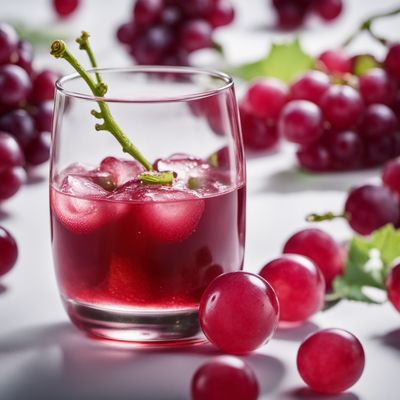
Ingredient
Fruit soft drink, gooseberry
"Tangy Delight: Exploring the Zesty World of Gooseberry Fruit Soft Drinks"
Gooseberry fruit soft drinks are characterized by their vibrant green color and tangy flavor. The fruit itself is small and round, with a slightly translucent skin that ranges in color from pale green to yellow. The flesh of the gooseberry is juicy and tart, offering a delightful balance of sweetness and acidity. When used in soft drinks, gooseberries lend a refreshing and invigorating taste, making them a perfect choice for those looking for a unique and flavorful beverage option.
Origins and history
Gooseberries have a long history and are believed to have originated in Europe and Asia. They have been cultivated for centuries and have been used in various culinary applications, including beverages. Gooseberries have cultural significance in many countries, such as India, where they are used in traditional Ayurvedic medicine. In Europe, gooseberries have been enjoyed for their tart flavor and are commonly used in jams, jellies, and desserts.
Nutritional information
Gooseberries are a rich source of vitamin C, providing more than 100% of the recommended daily intake in just one serving. They also contain fiber, potassium, and antioxidants, making them a nutritious addition to any diet.
Allergens
Gooseberries are not commonly associated with allergies, but individuals with a known allergy to berries or other fruits should exercise caution.
How to select
When selecting gooseberries for a fruit soft drink, look for firm and plump berries with a vibrant green or yellow color. Avoid berries that are overly soft or have blemishes. The size of the berries may vary, but choose ones that are uniform in size for consistent flavor.
Storage recommendations
Gooseberries are best stored in the refrigerator, where they can stay fresh for up to two weeks. To extend their shelf life, remove any damaged or spoiled berries before storing. Alternatively, gooseberries can be frozen for long-term storage.
How to produce
Gooseberries can be grown in a home garden or purchased from local farmers' markets. They thrive in temperate climates and require well-drained soil and full sun. With proper care and maintenance, gooseberry bushes can produce an abundant harvest of berries that can be used to make homemade fruit soft drinks.
Preparation tips
To prepare a gooseberry fruit soft drink, start by washing the berries thoroughly and removing any stems or leaves. Blend the berries with water, sweetener (if desired), and a squeeze of lemon juice for added brightness. Strain the mixture to remove any seeds or pulp, and serve chilled. Gooseberry fruit soft drinks can also be used as a base for cocktails or mixed with sparkling water for a fizzy twist.
Culinary uses
Gooseberry fruit soft drinks are a popular choice for refreshing beverages, but gooseberries can also be used in jams, jellies, pies, and desserts. They pair well with other fruits like strawberries, raspberries, and apples, adding a tangy twist to various culinary creations.
Availability
Gooseberries are commonly available in regions with temperate climates, including Europe, Asia, and North America. They are cultivated in countries such as India, the United Kingdom, Germany, and the United States.
More ingredients from this category » Browse all

Fruit soft drink, peach
The Peachy Quencher

Fruit soft drink, orange
The Zesty Quencher

Fruit soft drink, pomegranate
Pomegranate Bliss in a Bottle

Fruit soft drink, plum
Plum Paradise: Exploring the Refreshing World of Fruit Soft Drinks

Fruit soft drink, grape red
"The Vibrant Delight: Exploring the World of Red Grape Fruit Soft Drinks"

Fruit soft drink, raspberry
Raspberry Bliss

Fruit soft drink, currant white
The Zesty Elixir: White Currant Fizz

Diet soft drinks with fruit juice
The Refreshing Fusion

Fruit soft drink, grapefruit
Zesty Citrus Refresher

Fruit soft drink, papaya
The Tropical Elixir: Unveiling the Delights of Papaya Fruit Soft Drink

Fruit soft drink, mixed fruit
The Refreshing Quencher: Mixed Fruit Soft Drink

Fruit soft drink, mango
"Mango Bliss: Exploring the Tropical Delight of Fruit Soft Drinks"